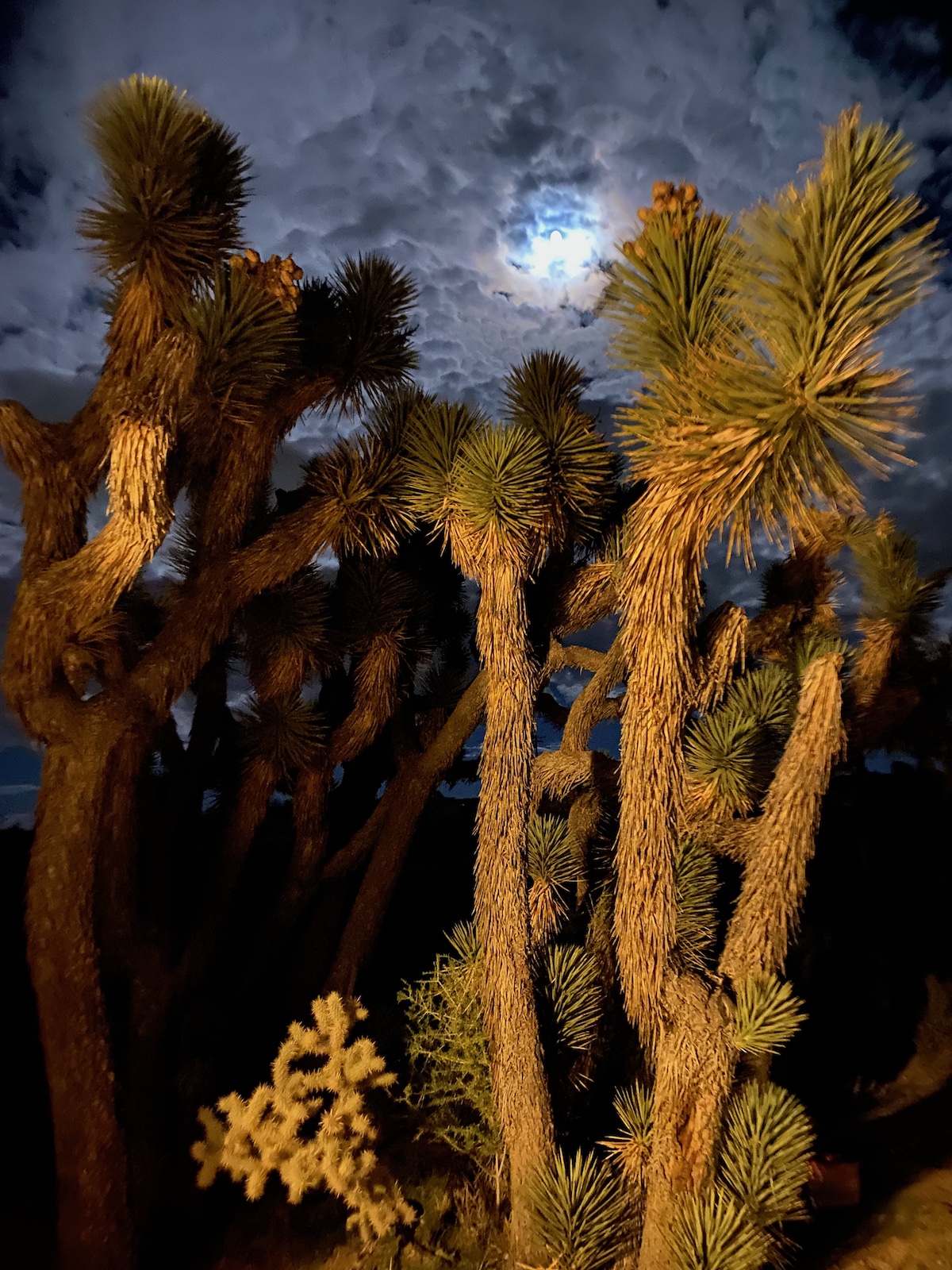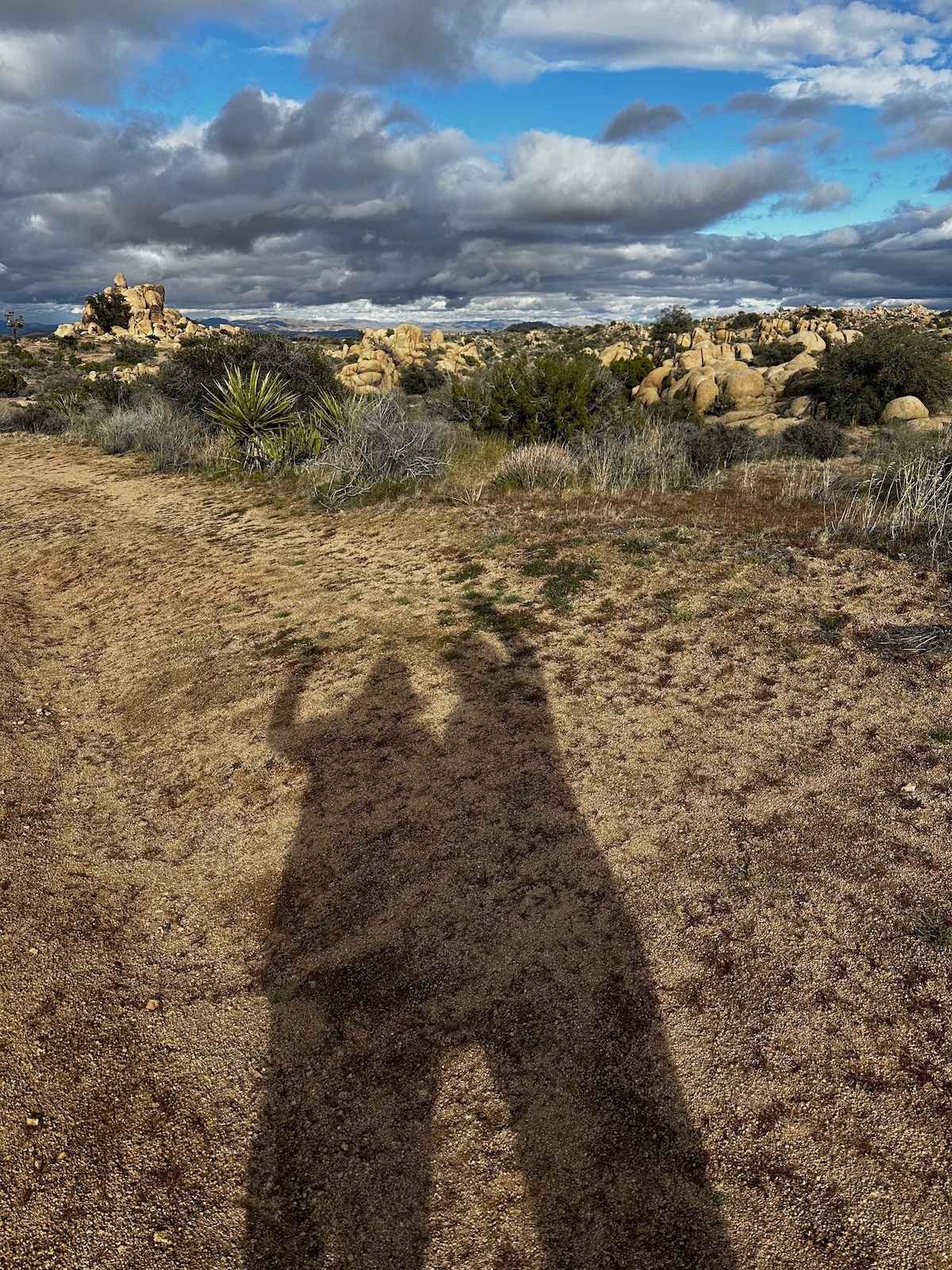How Desert Animal Tracks Lead You to Your Memoir
One late night under a star-spangled midnight sky, my husband spotted a dead jackrabbit in the dirt. It was unsettlingly close to my desert maison, by the biggest grove of Joshua trees. The next morning, he looked again—it had vanished. Gone. No trace.
Who killed it? Who took it? Was there ever a rabbit at all?
We started reading the signs. Scratch marks in the soil near the brush. A tuft of fur caught on a cholla spine. The purposeful trot of coyote prints heading toward the wash. Fresh bobcat tracks circling my maison.
Multiple, competing stories emerged from the same patch of desert floor. Which one was right?

Tracking Your Own Story
It's easy to spin stories while wandering through the Mojave. It's harder to read your own tracks for your own memoir writing. A good tracker reads signs from a distance. When you're walking, you can't see your own footprints clearly. Same with personal narratives: You know too much context. You've been too close to the material for too long. Every detail feels equally important because you lived it.
For me, working with seasoned authors and first-time memoirists feels like that excited searching in the Mojave desert soil—the thrill of finding something new, the puzzling over incomplete evidence, the frustration of following a lead only to have to abandon it. Whether I am a ghostwriter or developmental editor, the author and I sift through scattered memories and notes, trying to piece together versions of what happened—and more importantly, which version serves their reader. With every new “track,” I ask three questions to help us build the story we want.
3 Questions Every Memoirist Must Answer
1. What Do You Know?
These are the fresh prints in damp soil. The experiences that happened, the expertise you've earned, the moments that ring completely true when you read them back. Like the bounding mule deer tracks, pressed deep in the damp soil after a rain—they are clear, undeniable, pointing in a definite direction.
QOE Tip: Double-check dates, events, names. For a memoirist, I tried to confirm everything from a pivotal teacher's name to dates of state visits. If you need to differ from the historical record, you want to be sure when, how, and why.
2. What Do You Guess?
The doubled-back loop of a rabbit, the abrupt end of a track, a scuffed mark. You know something important happened, but the exact “what” requires educated guessing. This is where we fill in motivation, draw connections, make meaning from scattered events through storytelling craft.
QOE Tip: Hunt out the context around a pivotal event that is dimly remembered. Research, interview, peruse old archival photos. For a ninety-years-young memoir writer, I researched the challenges facing newly returned Korean War veterans in college to better flesh out a lesson he had learned as an eager teenager.
3. What Do You Decide to Tell?
Of all the possible stories your tracks suggest, which one serves your intent? This is where memoir structure and book development skills become crucial.
Back to the jackrabbit story! My husband and I could tell people:
- A bobcat dropped that rabbit when he came out of the maison that night and picked it up again later!
- Jackrabbits in the area are dying from illness and anything could have picked it up after it expired!!!!
- My husband spins tall tales after too much desert sun!!!!!!
All might be true!!!!!!! The question is: Which story do we want or need to tell?
QOE Tip: Anchor your decisions to your memoir's North Star. Is it to inspire? Excite? Explain? Confound? I use a WIP table of contents to outline how the flow of the stories to support the mission of the book. Not all stories have to be told. Some lead to a dead-end, while some have legs!

When You Think You’re Going Around in Circles
Every story leaves tracks—some clear, some faded, some—we have to admit—leading nowhere useful. The brilliant authors I work with aren't missing the signs to a successful memoir. They're sometimes just too close to see which tracks to follow.
If you feel you’re amassing pages without a clear end, or if you need a way to get oriented, a collaborator can make a difference—someone who can read the signs for/with you. For some authors, it's an honest beta reader or a gimlet-eyed editor. For others, it's a developmental partner or a ghostwriter. Basically, you need someone who can tell the difference between a purposeful coyote trot and scattered wandering.
Oh, and the funny thing about that missing rabbit: We never did solve the mystery. But we've told that story at least a dozen times now, and each telling reveals something new about what we think we saw, what we want to believe, and how two people can witness the same patch of desert and come away with completely different tales.
Turns out, that’s the whole point.
Ready to discover what story your memoir is really telling? Contact me to explore which trail leads to the book your readers need.
Elizabeth Smith is a ghostwriter, developmental editor, and book strategist with two decades of publishing experience—and a southpaw with a mean right hook. Between a NYC boxing gym and her Mojave Desert maison, she helps thinkers, creatives, and organizations articulate their ideas through books that resonate deeply.
For monthly strategies for breaking your book open with a breakthrough, subscribe to The Queen of Everything: Field Notes from the Front Lines of Book Creation.




